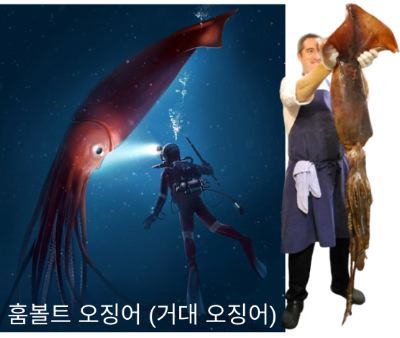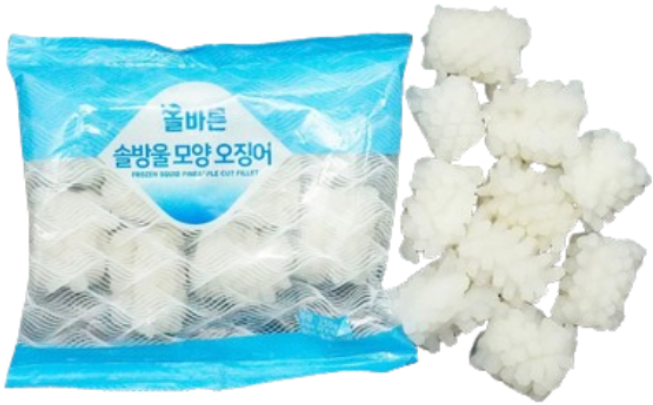|

How a cost-effective ingredient fuels Korean cuisine while disrupting fisheries worldwide
From Korean Plate to Global Problem: The Dual Life of the Giant Squid
 SOUTH KOREA
SOUTH KOREA
Tuesday, April 29, 2025, 06:50 (GMT + 9)
A look at the Humboldt squid's significance as a Korean food source versus its challenging impact on international fishing operations
The Dichotomous Role of Dosidicus gigas: A Cornerstone of Korean Seafood Consumption, A Source of Conflict in Global Fisheries
The Humboldt squid (Dosidicus gigas), a cephalopod mollusc reaching impressive lengths of up to 3 meters and characterized by its dynamic chromatophores and formidable tentacular hooks, occupies a unique and contrasting position within the global seafood industry. While a fundamental and widely consumed ingredient in Korean cuisine, this species is often regarded as a significant operational challenge and economic burden for fisheries in other regions.
.jpg)
Native to the deep waters of the Southern Ocean, South Pacific, and South Atlantic, typically at depths of 300-800 meters in cold, oxygen-rich environments, D. gigas rarely ventures into Korean waters, where the dominant squid species remain the smaller Todarodes pacificus (Japanese flying squid) and Sepioteuthis lessoniana (oval squid). However, despite its scarcity in their local catch, the Humboldt squid has become a pervasive ingredient in the Korean food landscape.
 As this analysis reveals, D. gigas is a staple in various processed seafood products popular in Korea. From the ubiquitous "giant squid" fries found in snack shops to the primary component of squid salted fish and the popular side dish jinmichae (dried shredded squid), the Humboldt squid serves as a cost-effective and readily available protein source. Furthermore, seasoned squid legs and bodies sold in convenience stores and a significant portion of the squid used in restaurant staples like stir-fried squid and seafood jjambbong are also derived from this species. The substitution of increasingly scarce and expensive domestic squid with D. gigas is a growing trend, often marketed simply as "squid" on product packaging due to the lack of mandatory species differentiation. As this analysis reveals, D. gigas is a staple in various processed seafood products popular in Korea. From the ubiquitous "giant squid" fries found in snack shops to the primary component of squid salted fish and the popular side dish jinmichae (dried shredded squid), the Humboldt squid serves as a cost-effective and readily available protein source. Furthermore, seasoned squid legs and bodies sold in convenience stores and a significant portion of the squid used in restaurant staples like stir-fried squid and seafood jjambbong are also derived from this species. The substitution of increasingly scarce and expensive domestic squid with D. gigas is a growing trend, often marketed simply as "squid" on product packaging due to the lack of mandatory species differentiation.
Conversely, in international waters, particularly within the migratory range of D. gigas, the species presents significant operational challenges for fishermen. Its frequent bycatch in fishing nets can lead to damage of gear, predation on targeted fish stocks within the nets, and potential injury to crew members during handling due to the squid's size, aggressive behavior, and powerful tentacles. This negative interaction has fostered a perception of D. gigas as a nuisance species in many overseas fishing communities.
Interestingly, global perceptions of large, multi-limbed seafood are evolving, with a decreasing aversion in markets like North America and Europe, where fried Humboldt squid is gaining traction. However, seafood professionals should be aware of the inherent characteristics of D. gigas, notably its high ammonium ion content, which necessitates rigorous processing, including thorough washing (sometimes with the use of bleach at industrial levels, or rice water domestically) to mitigate potential ammonia off-flavors.

Despite the processing demands, the economic drivers of affordability and availability suggest that the demand for Humboldt squid will likely continue to rise in Korea, a nation with a high per capita consumption of squid. Understanding this dichotomy – the Humboldt squid as a vital, budget-friendly ingredient in one major market versus a problematic bycatch in others – is crucial for seafood professionals navigating global sourcing, market trends, and sustainable fisheries management. This case highlights the complex and often contrasting values placed on marine resources across different cultural and economic contexts.
[email protected]
www.seafood.media
|
|



